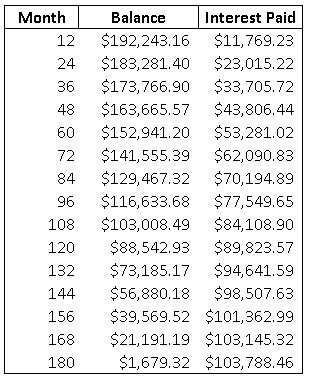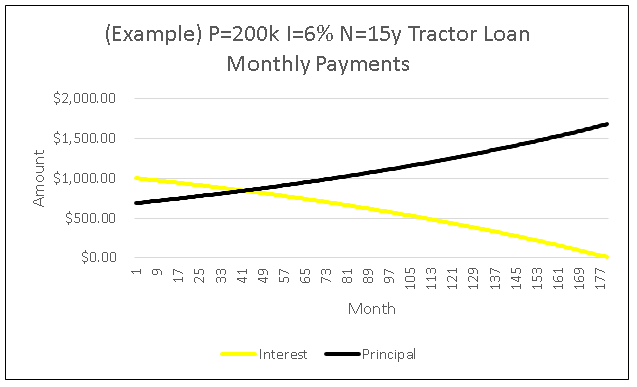The Black Ink Team's Guide To How Loans Work
by Black Ink Team
Depending on your credit history, you can take out a loan to buy basically anything – a house, a car, a boat, a motorcycle, power equipment, you name it. The idea behind loans is that someone gives you the money to buy something in you want and, in return, you pay them that amount of money back in addition to an extra amount (which is called ‘interest’). The ‘interest rate’ is how much extra per year you must pay back your ‘creditor’ (or the business that gave you the loan). The initial amount of money you receive from a loan is called the ‘principal.’
To ‘amortize’ means “to put money aside at intervals for gradual payment of (a debt, etc.).” Amortized loans are where you pay monthly payments for the duration of your loan that at the end add up to the total amount that you owe, and as time passes the amount of interest that each monthly payment pays for decreases while the amount of principal increases. This ensures that should you ‘default’ (or lose the capability to make good) on your loan towards the beginning then the creditor has mostly lost out on the interest instead of the principal. It makes much more financially sense to back out on an amortized loan towards the end of its term, because otherwise the asset is currently worth less to you.
‘Prime’ interest rates are rates that creditors give to the best qualified customers, who have good credit ratings and can demonstrate a steady source of income. ‘Subprime’ lending is when a customer does not qualify for prime rates and means that the loan will carry a higher interest rate, to reflect the elevated amount of risk. Some interest rates are adjustable, meaning they change over time depending on external factors such as the market.
For example, let’s say you run a farm and need a new tractor. After looking at your requirements and researching all the available models, you find that the lowest amount of money you need to spend is $220,000. Unfortunately money is tight, so you decide to take out a loan, which thankfully you qualify for. You make a ‘down payment’ (a preliminary payment that secures a loan) of $20,000 (or 9.1%), leaving you with $200,000 to pay off. The final terms you agree to are fifteen years at 6 percent.
In reality the creditor will show you the monthly payments when you are taking out the loan, but for fun let’s calculate them ourselves. First we’ll need the ‘discount factor,’ which is a variable that represents the current value of a liability. The formula we use is {[(1 + i) ^n] - 1} / [i(1 + i)^n] where “i” equals the periodic interest rate (the interest rate divided by 12) and “n” equals the number of periodic payments (the number of years multiplied by 12). If we plug everything in, we get {[(1 + .005) ^180] - 1} / [.005(1 + .005)^180] or 118.5. Now, we just need to divide the principal by the discount factor to find the monthly payment: 200000/118.5 = 1687.71. (Note: for the purpose of writing this article we rounded off the discount factor, but for the calculations we used the real answer to nine places.)

When you make your first payment on your tractor loan, you will be paying interest based on the entire principal. To calculate how much exactly, we use the formula P(I/12) where P is the principal and I is the interest rate. 200000(.06/12) = 1000. Subtract that amount from the total amount that you pay, and you get the amount of principal you will pay during the first month: 1687.71 – 1000 = 687.71. Next month, the payment amount will be the same, but contrarily you will paying interest based on your new ‘balance’ (or the amount of principal you still owe, 200000 – 687.71 = 199312.29), which will be lower, therefore the interest/principal breakdown of the payment will skew towards going to the principal.

